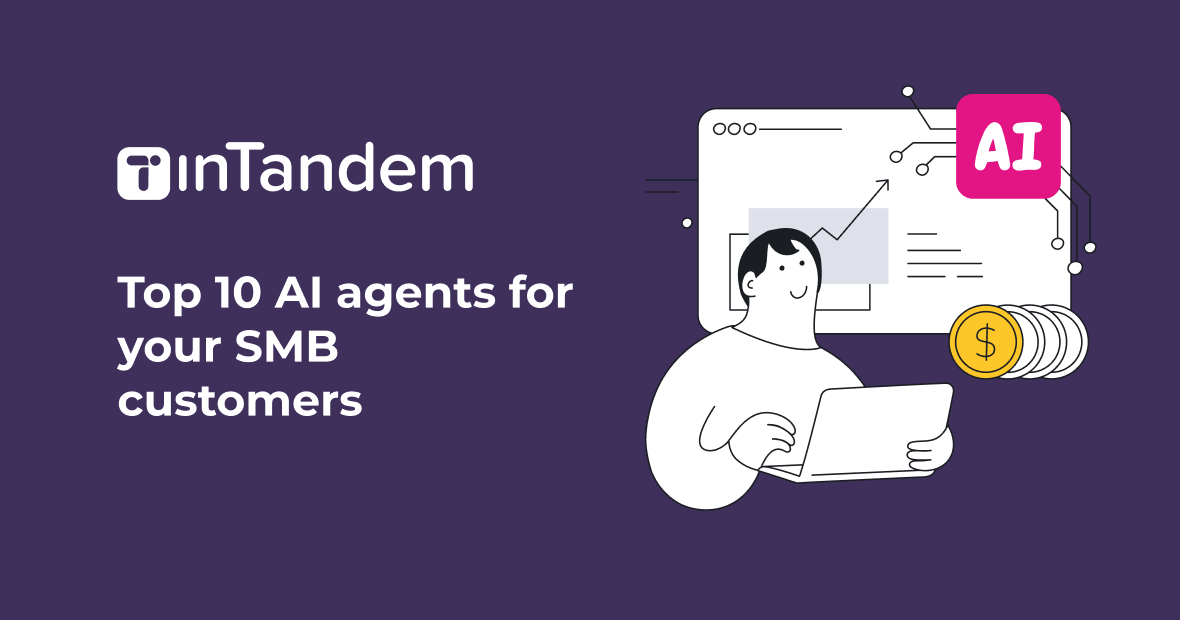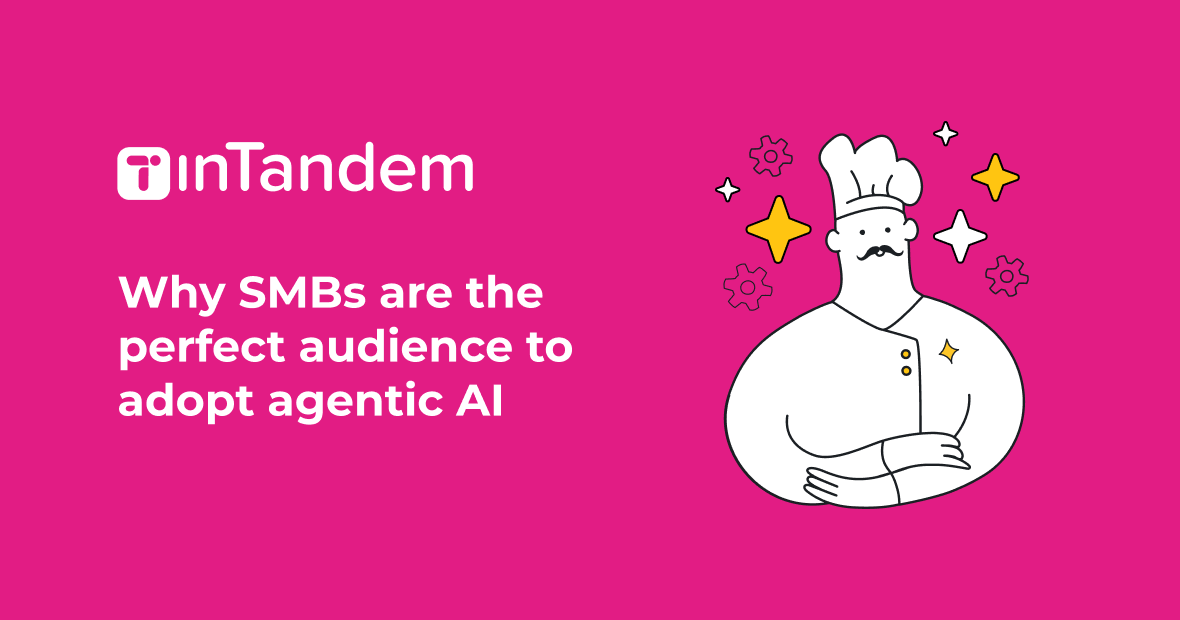For the third consecutive year, vcita has launched a survey to collect data from 500 small business owners in the US market. This year’s survey zooms in on current trends reflecting the adoption of digital tools, and specifically artificial intelligence (AI), within the small business community.
What we found was that the vast majority use digital tools, mostly for financial tasks, and a significant percentage already use AI to automate business workflows, with the biggest concern being a need to stabilize cash flow.
SMB owners are surrounded by an ocean of options and opportunities, with loads of ways to implement digital tools and AI in their business operations. But how are they using these tools in reality? What processes are they choosing to automate or streamline, and which tools are they using to do so?
We set out to understand everything about small business owners’ relationship with business tools and AI.
About our survey
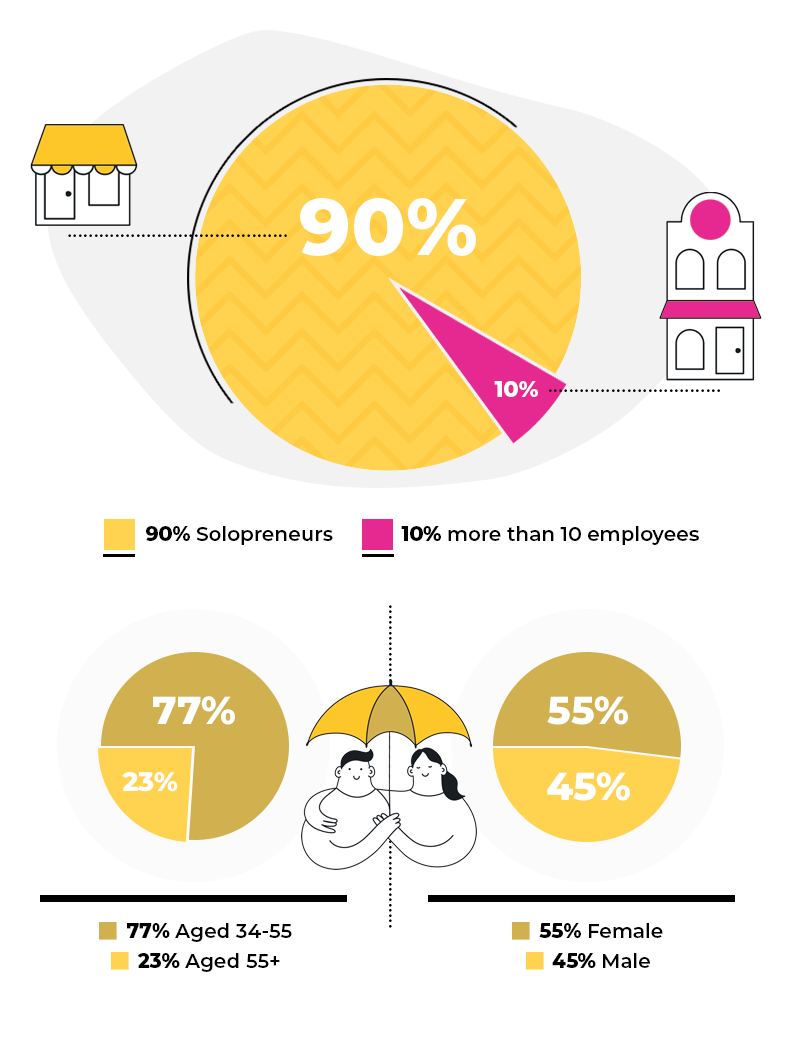
We surveyed 500 small business owners from across the US by the end of November 2023, the majority of whom worked alone without extra employees. Only 10% of respondents have more than 10 employees. Our survey participants were mostly aged 35-44, although close to a quarter were over 54. Women outnumber men in our survey, but not by much: 55% are female, and 45% are male.
Purchasing digital tools: the decision process
When it comes to digital business tools, small businesses aren’t short of options. In fact, they have the opposite problem: there’s an overwhelming number of tools on the market. The Chiefmartec Marketing Technology Landscape for 2023 lists over 11,000 SaaS tools, including categories like:
- search and social advertising;
- email marketing;
- content marketing;
- CMS;
- SEO;
- CRM;
- business intelligence;
- dashboards;
- collaboration platforms;
- budgeting and finance tools;
- project management;
- and many many more.
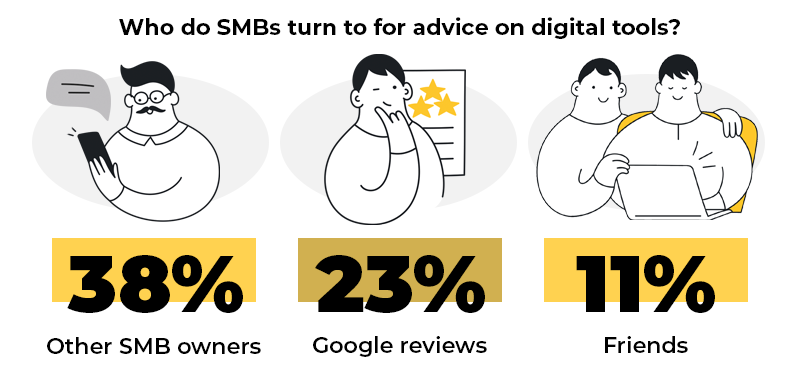
The question we wanted to ask was “How can SMB owners find appropriate and relevant digital tools amongst this tsunami of possibilities?” The answer we found is that they turn to their own network. According to our survey participants, the best way to select digital tools is through word-of-mouth, ideally from fellow small business owners. Thirty-eight percent ask other SMB owners and another 11% ask their friends, while 23% rely on their own research through Google reviews.
It’s a similar story when it comes to seeking business advice; 32% of SMBs consult with other SMBs if they need support or help, and 16% talk to their network, while 14% ask Google.
But what’s going through their minds when it comes to actually purchasing? Our survey found that when sifting through digital tools, the biggest factor in their decision-making process is “ease-of-use” of the solution in question, with 52.4% citing that as their leading concern.
SMB usage of digital tools
Using digital tools to manage business operations is now the norm, not the exception, and that’s a trend that’s only going to continue. According to recent research, the global SMB software market is expected to keep growing at a CAGR of 7.4% between 2021 and 2027, to reach an estimated value of $85,720 billion by the target year. That represents an awfully large number of small business owners using digital tools.
This matches what we’ve seen in our own data. Daily usage of our platform increased by 46% between 2022 and 2023, with small business owners accessing the vcita solution anywhere between 12 and 20 times a day. According to our survey, 72% of SMB owners spend at least $1,200 a year on digital tools, with 58% spending up to $6,000 annually. This is a significant increase from the previous year, when only 38.6% spent more than $1,000, and an even bigger contrast to 2021, when only 20% spent over $500, let alone $1,000. With the increase in spend comes a presumed rise in digital tool usage.
However, the higher cost of digital tools is partly due to the number that each business is using. We found that 79% of SMB owners are using two or more digital tools to run their small business, and 13% are juggling five or more. Many tools have overlapping features, causing SMBs to pay for unnecessary licenses. Businesses are also wasting time shuffling between platforms, facing an elevated risk of errors as data is entered manually into each tool, and can encounter integration issues between software from different vendors.
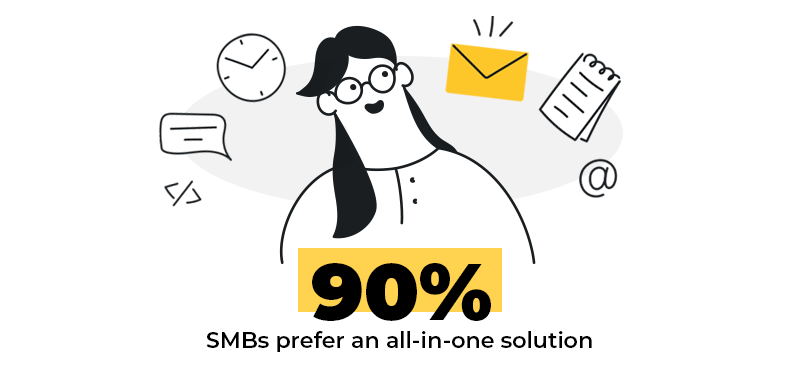
Few of them enjoy this state of affairs; 90% would like to combine the capabilities their digital tools provide into just one tool.
Biggest concern: their finances
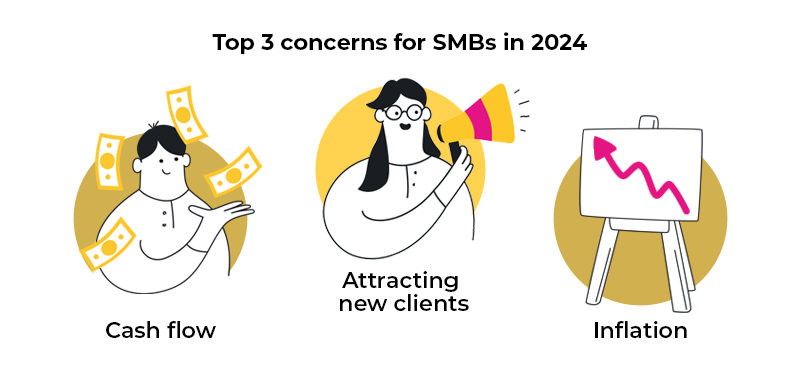
Bleeding money on surplus digital subscriptions is a particularly painful issue as finances are a major concern for most small business owners. When we asked about their top worries for 2024, we found that SMB owners are most anxious about the economic elements of their business, with 25% citing cash flow concerns, another 25% saying they are most worried about attracting new clients, and 17% saying inflation is their biggest worry.
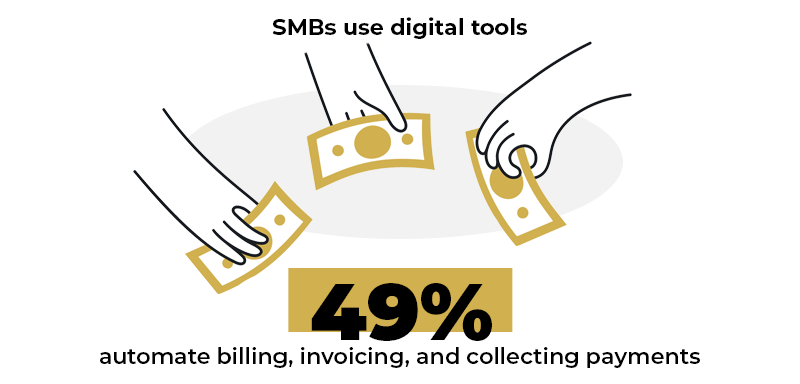
Their top concerns are reflected in their priorities for digital business tools. When we take a deep dive into the specific capabilities that SMBs are using, we find that tools that help with their finances are in higher demand. Forty-nine percent of SMBs use digital tools to automate billing, invoicing, and collecting payments, and 38% said that the must-have capabilities for an all-in-one business management solution include billing, invoicing, payments, and accounting reports.
The future: Adoption of AI tech in the SMB market
Looking ahead, it seems that small business owners are likely to continue to adopt AI tools that serve their pressing business needs. When asked which features they would look for in an AI business tool, respondents mentioned a number of uses, with 20% saying they want help with pricing services and products in relation to their competition, 18% looking for assistance generating email and SMS campaign texts, and 16% hoping for help following up with clients.
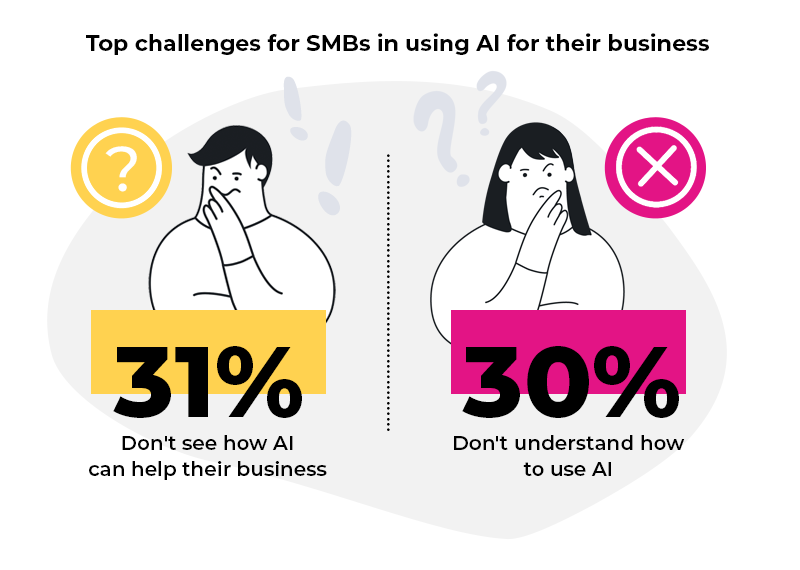
We were delighted to discover that close to one-third of SMB owners are already using AI to streamline their business operations. Among those who haven’t yet adopted AI tools, the main barrier seems to be an imperfect understanding of how AI can help them. Thirty one percent said that they don’t see how AI could help their business, and 30% told us that they don’t understand how to use AI.
What can SMBs look forward to in 2024?
It’s safe to say that small business owners are avid tech users, with a firm appreciation of the assistance that digital tools deliver in helping improve business operations.
With most of them using multiple tools, but expressing a preference for a single solution, we expect to see significant numbers making the shift to an all-in-one platform that can handle all their business management needs. In this regard, we offer the inTandem all-in-one solution built for small businesses, which includes AI analytics, automation, billing and invoicing, payment collection, scheduling, CRM, marketing tools, and more. With inTandem, large organizations that serve small and medium-sized businesses can offer vital digital business tools in one place under their brand.
Finances are the overriding concern for small business owners, so they’ll continue to seek tools that help address pressing cash flow issues, such as payment processing, cash flow forecasting, accounting, and bookkeeping. The same concern for cash flow is likely to drive them to trim down expenses on SaaS digital tools to only those licenses that truly deliver value.
AI business tools have made notable inroads into business owners’ toolbox, but adoption still has a long way to go. Given that the majority of those holding back are doing so because they aren’t sure about AI’s ability to help, we expect that educational content will enable them to soon discover the benefits of AI business tools and drive more adoption.
We’ll continue to monitor SMB needs and preferences for the tech market throughout 2024 and for the long term, and share our insights to help strengthen the offerings provided to SMB owners.
To learn how you can empower your SMB clients with inTandem, click here.
To download an infographic with 25 stats you need to know from this survey, click here.
























